It is absolutely, 100%, scientifically certified as fact – certain breeds of horse are too lazy to canter and instead they prefer to run faster and faster at the trot instead.
Does this logic sound a bit off to you? It does to me too.
I've heard that it is believed by some that certain breeds – in particular stock breeds like Paints – prefer to simply go faster at the trot than to merely pick up a canter and it is due to their breed. I cannot swallow this idea, but I can shed some light on why this has come to be believed as fact.
Any breed of horse can find it difficult to transition from the trot to the canter if they lack
- a balanced rider,
- appropriate timing of the aids,
- and the proper use of the half-halt.
Those breeds which are then built naturally downhill and ridden in a manner that exaggerates this downhill balance will find even more difficulty in jumping from the trot into the canter. The easiest gait for a horse to transition from into the canter is not the trot but rather the walk.
Why? Because the horse not only has to lift the front end and drive himself from behind, he also has to change the arrangement of his legs as he leaps into the canter.
Try this exercise
Take off running at a good pace, not quite sprinting but considerably faster than a slow jog. Now, without slowing down change to skipping. This is similar to what happens when you ask the horse to go from trot to canter. Now, while walking move to skipping – much easier. If, however while you are running you pause momentarily (slow down briefly) and then move immediately into skipping it is easier than if you don't give a pause. This is equivalent to a half-halt's purpose.
Simply pushing the horse more and more and more while he is trotting in the hopes that he will break into canter is then like us taking off at a full sprint and trying to changing to skipping without slowing down at all – very very difficult.
Our job as equestrians then is to methodically work the horse in a way that makes it easy for him to do what it is we want – utilize the half-halt to make transitions from the trot to canter easier. If you are not proficient with the half-halt it is then easier to practice transitioning from the walk into canter for the horse. Recognize when he is moving too quickly at the trot to transition into the canter without great difficulty. And for those breeds who are naturally built downhill practice riding them more up, forward and open rather than peanut rolling them and expecting a nice light, lofty and easy canter departure.
And in closing, there is no horse I have ever met who is lazy without being accompanied likewise by a lazy rider.
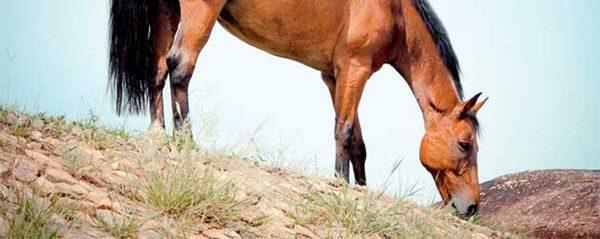
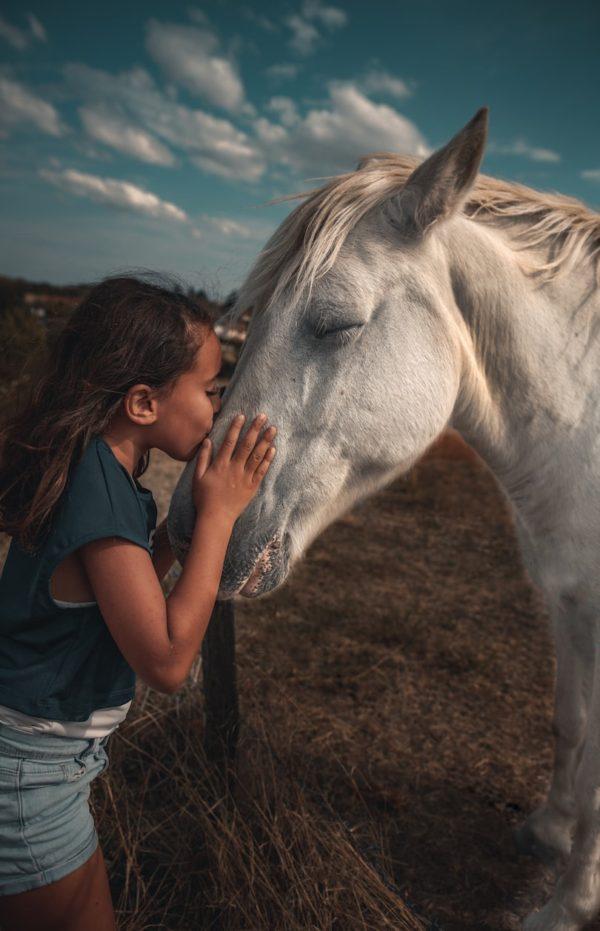
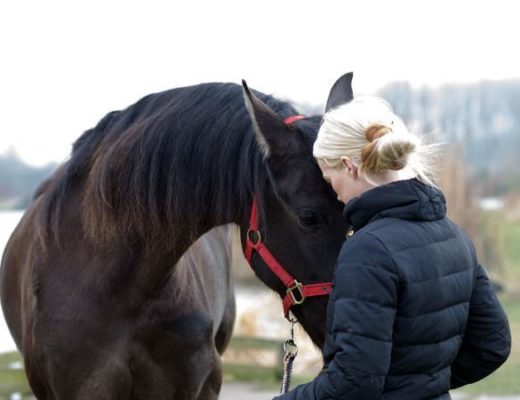
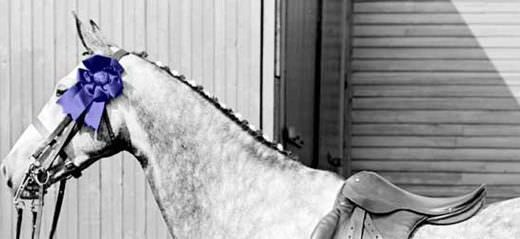
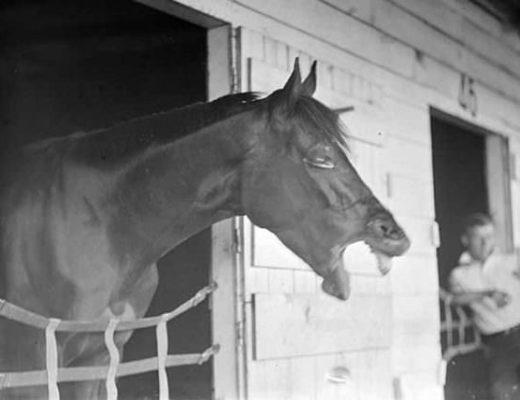
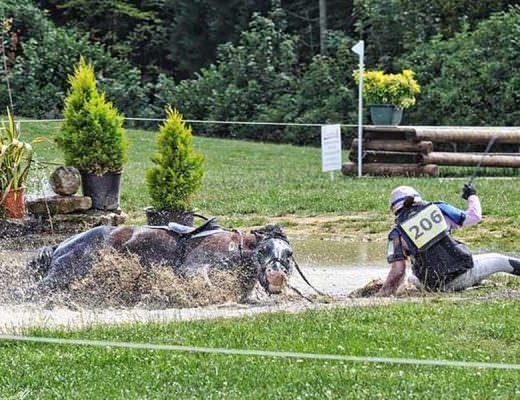
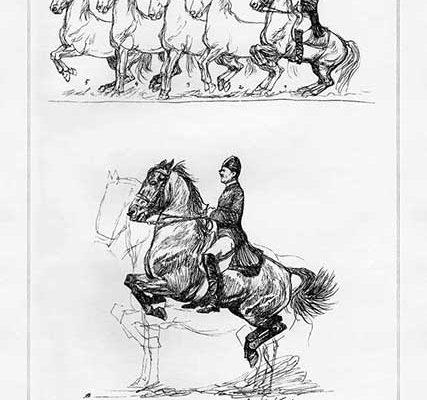
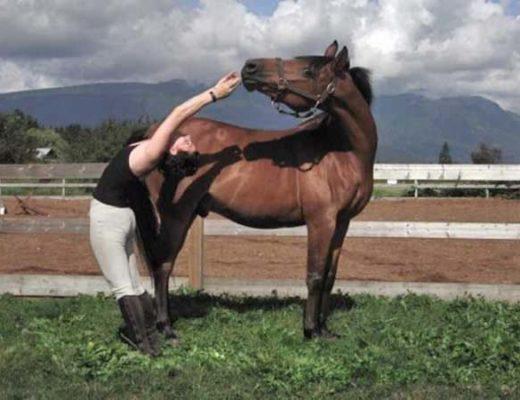
I have worked with horses that have been bred specifically over generations to trot or pace. Even in the pasture they will choose the movement. I tend to leave them to what they have been ingrained to do and spend more time on those horses more physically and mentally inclined to apply themselves to cantering.
I feel that with only so many hours in a day, I have nothing to prove by trying to make a horse (however nicely I do it) perform an activity that is contrary to their breeding and previous training. A standardbred racer that has been used in a cart to pace by placing straps on their legs and drilled for hours and days and months and years, perhaps deserves a life of leisure not retraining. They are often great for trail riding as they have learned to accept many situations at the track.
This idea in no way diminishes my agreement with your methods of balance and aid timing.
‘I have worked with horses that have been bred specifically over generations to trot or pace. Even in the pasture they will choose the movement. I tend to leave them to what they have been ingrained to do and spend more time on those horses more physically and mentally inclined to apply themselves to cantering.’
I disagree with you,Anne.
I have worked with the same horses for many years.They are easy to train because they are already trained to begin with.Obviously,at least to me,you are familiar with horses that are what we refer to as having ‘tired legs’ or lack good foundation training to begin with.Standies are without saddle training,but not unresponsive to aides.They can have very long careers and that would never be possible if they were ‘born wrong’ to begin with.Training makes the horse.All Standies will WTC in the pasture.Why?…because they can. Just as any other horse moving freely does.What is going on in your pasture that is making the horse pace or trot like a lunatic?I’ve seen studs and stabled horses do the exact same type of behaviors when turned out.The horse’s state of mind should be evaluated,when behaving in such ways,not their gaits.You are not witnessing training.You are witnessing a deeply stressed horse.
It is not a choice for any Standie to maintain pace or trot.Gait is not biological in Standies though it can appear to be.It is training and often trained best by a mare that paces or trots.Both are gaits used in carriage driving.Most horse breeds today are a very long way from their driven ancestors.All horses will pace and trot.I’ve seen horses pastured with Standies that learned to pace from them.I don’t believe it was a choice for the herd.Put an old, well trained horse with a young horse and watch the older horse train the youngster for you.That’s natural horsemanship at it’s finest.Shame on the trainer who uses this as an excuse to dismiss a horse they can’t handle.
Standies are used to one on one attention with people on a daily basis.Removing that from their lives is devastating to them.That’s not a kindness to them or a deserved retirement.It’s torture,but they do get used to it and cope.Is there any choice for them?Not in a world of ‘hot shot’ trainers and shortcuts.When in doubt blame the horse”s breeding and previous training.Throw the horse in a pasture,call it retirement because that makes you feel good,pat yourself on the back and ‘invest’ in something ‘worth your time’.People who make statements, such as yours ,train horses wrong to begin with.
Poorly trained horses will always posses ‘tells’ of the training they endured.The basics of classical training benefits all disciplines.Pacers and trots included.Drive training is an art.On the track driving is an art not suited for the faint of heart. Standies who have raced will reflect this.They can not win a race without the drivers instruction.None of the horses are merely going forward like a really fast carousel.Understanding that is the Rosetta Stone of transition training for Standies.This should not be all Greek to a horse trainer.Forward…..Standies go forward with ease and trust.Most people can not keep any horse going forward ,for any length of time, cantering at a consistent speed or rhythm.That should go a long way to explain why Standies aren’t cantering for trainers.Groundwork comes before the saddle.Walk,trot and canter.Put the foundation for canter into the horse before saddle training.They will canter for you when they realize your going to let them.Once started they go about it the same way other horses do.Balance is needed to canter.Many horses do not canter very well when they start training.No balance.Add a rider on an unbalanced horse and the horse is headed to failure.Always use a horse’s training to succeed.Don’t let them ever think they will fail.
No…they will not bow down to you just because you want them to.What breed of horse does?No…they will not carry a rider effortlessly without the opportunity to develop strong enough physically to carry the rider.Is conditioning so hard to provide and maintain for trainers?Apparently it is and that disgusts me.No breed of horse that I am aware of can succeed in any discipline without proper conditioning.That takes knowledge and skill in a trainer.Who’s paying for that today?Horses…. all of them and of any breed we care to mention.Would you jump on a two or three year old horse and expect them to carry you for hours?Yank any horse you please to the mounting block and fly and dance about on it?Not in a million years.Mind you now…if someone only has so many hours in the day and nothing to prove by the activities they spend their days engaged in,it is doubtful ,they will accomplish very much worth mentioning when training a horse.That kind of person does start a horse wrong and cripples it mentally and physically.The discipline they are training in makes no particular difference for the horse.
The horse industry is full of such people.Anyone paid in the horse world is part of the horse industry.Professional courtesy dictates that one should at least understand the equipment used ,correctly or incorrectly,in any discipline before evaluating the horse and it’s entire studbook,trained or not with them ,as ‘worthless’. Thankfully, Spanish Riding School feels differently about driving and many of their broodmares are trained in the discipline.And superbly,I will add.It should not be a surprise to anyone to find out that they use the same methods and equipment that the best track trainers use and for the same reasons.Apparently they also fail out horses from training and sell many broodmares and ‘never gonna happen’ horses to the public.Why is that?Do they stamp their rejects as ‘born wrong’?Are we to believe,using your logic, these Lipizzaner are worthless because they can’t do highschool?Only good for trail riding?Most horses will have so very little invested into their training that trail riding would be all many could do.Standies are making great trail riders because the people who own them invested time into making them good trail riders.My school uses them for jumping..Canter,correct leads and changes being a prerequisite in the discipline.Ground work is the polish that makes the best jumpers appear to soar in their work.OTT Standies are scopey, fearless and deeply sensitive to aides.
I agree with Erica.Laziness ruins your horse.
Lazy trainers ruin other people’s horses.
Lee,
There are some points I agree with and some I disagree with in your response to Anne.
There is a possibility to breed a difference in gait at the “trot” pace. To see an example of this one only needs to go so far as to track down a Paso Fino, Tennessee Walker, Missouri Foxtrotter, Icelandic, etc. What greatly influences genetic changes of gait is also the conformation that supports the application of those gaits.
Can gaited horses be trained to trot diagonally? Yes. So too can trotting horses be trained to lateralize and break their trot gait. It is not common to do so, and is greatly frowned upon by the gaited horse community to train a gaited horse to trot, but it can be done and if applied correctly can be done in conjunction with the horse’s natural gait tendencies to further strengthen and condition the horse.
The article refers directly to the canter gait, vs. dealing with trotting or the intermediate gaits such as pacing and so forth. All breeds can be met with the hurdle of cantering problems during training no matter if the horse’s tendency is to trot or gait/pace.
Also, I was not pointing out so much that the laziness of a trainer is the ultimate cause of cantering issues among breeds, rather that many trainers will simply label the horse as being “too lazy to canter” rather than assess the real problem. Laziness can be an issue for trainers if they are looking for a shortcut, but honestly there are many out there who genuinely believe that horses are “lazy”, “stupid”, “stubborn” and so on.
Cheers,
Erica
I never blame the horse.
But I also know my time limitations as well as those of others around me. I will leave a horse to itself and use it or not, according to what it can offer instead of proving that I can change/improve it – there are horses that deserve no more training.
1.”What is going on in your pasture that is making the horse pace or trot like a lunatic?”
2.”Throw the horse in a pasture,call it retirement because that makes you feel good,pat yourself on the back and ‘invest’ in something ‘worth your time’.People who make statements, such as yours ,train horses wrong to begin with.”
3.”Are we to believe,using your logic, these Lipizzaner are worthless because they can’t do highschool?Only good for trail riding?Most horses will have so very little invested into their training that trail riding would be all many could do.”
1.Nowhere does it imply in my writing that I have a lunatic horse in my pasture – but I have had horses from the track who come to my place in between races, and after having some down time in my pasture, return to place higher than they have ever placed before. Horses that the vet did not recognize because it was so content in the barn.
2. Some horses are not worth the time- leave it to people who have something to prove in that area. Retraining a horse is not the pinnacle of proof of good horsemanship. I educate my students to be better people and if that means knowing they have no time to learn how to retrain said horse, then that is good. In no way does it mean they stop learning as people, they now know what they don’t know and can live with that in that area.
3. My logic does not condemn a horse to trail riding. Humans want higher levels, not horses.
To say a GP doctor who may have treated and positively helped thousands of people in their life is not as good as a specialist who may have helped hundreds is a poor attitude to have towards skills.
I adore “lazy” horses. 😀 I used to recline on the belly of a retired racing gelding after freshening his bedding–and eat my lunch as he let me use him as a LazyBoy. It was lovely. He was lovely!